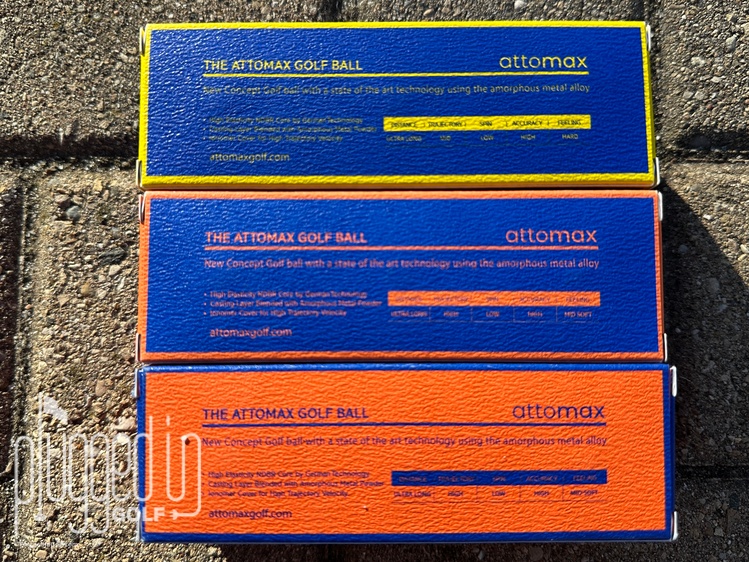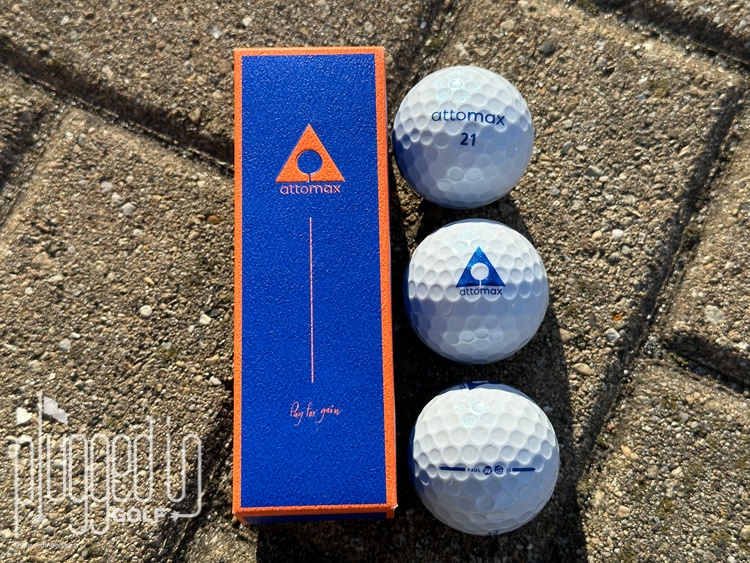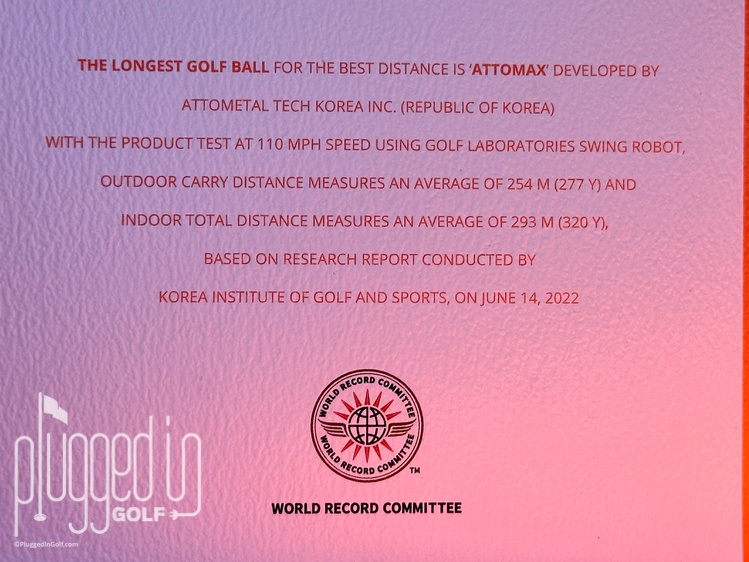
50 Words or Less
Attomax golf balls promise to be the longest you’ve ever played. Enhanced ball speed and very low spin help these golf balls live up to their word. Low short game spin and louder than average impact sound.
Introduction
“Pay for gain”
I don’t know that I’ve ever seen a more blunt, honest piece of text on a golf product.
At $250 per dozen, the Attomax golf balls are far and away the most expensive that I’ve ever tested. They justify that price by claiming to be the longest in the world. I was very excited to get them onto the launch monitor to see how much distance I could gain with a ball that’s over four times the price of my gamer.

Feel
The Attomax golf balls come in three types: Soft, Medium, and Hard. With such shockingly clear titles, you might think that there’s a clear distinction in the way that they feel, but I did not find that to be true.
I started out my putter testing with the Attomax Soft. While the feel is medium soft, and the impact sound is quiet, the tone is thin and a bit hollow which does not mesh with a soft, premium feel. Moving to the Medium, I found a similar feel and a slightly louder, fuller sound. The Attomax Hard has a firm feel off the putter with a louder, “click” sound. When I took the Attomax Hard to the course, the other players in my group noticed how much louder it was compared to my gamer.

Moving to the wedge, that “click” sound becomes even more pronounced. The feel is right in the middle of the bell curve for all three models, and the impact sound is loud and sharp. It’s not going to turn heads in the short game area, but it’s a long way from a Pro V1.
Finally, as I worked through my irons and woods, the three Attomax golf balls continued to be remarkably similar in both sound and feel. With the longer clubs, the impact sound remained loud and crisp, but the feel tilted slightly softer than average.

Short Game
Attomax golf balls are all billed as “Low” spin, and that showed up in my short game testing. On the launch monitor, all three models were significantly lower spinning than a Tour-caliber ball like the PXG Xtreme Tour . On full swings, the gap was a few thousand RPM.

Taking the Attomax balls to the course, my launch monitor findings were confirmed. Where other Tour-caliber balls were backing up, the Attomax would skip forward and stop. This lack of spin also made them longer with a stronger ball flight.

Long Game
Let’s get one thing out of the way: the Attomax golf balls are not USGA compliant. If you want to play in sanctioned events, these are not for you.
I put all three models through a full test, and I’ll report on each one individually, starting with the Attomax Hard golf ball. This is recommended for golfers with swing speed in excess of 105 MPH, which is me on most good days.
With mid irons, the launch monitor reported that the Attomax Hard was surprisingly similar to my normal tour ball. Ball speed was identical, and the spin was very similar. My results on the course differed slightly. With the Attomax Hard, I gained a couple yards of carry, and the ball did not stop as quickly when it landed. Even if I completely threw out the launch monitor data (which I would not), I would say that the Attomax Hard is reasonably similar to most tour golf balls.
Finally, we get to the main event, the driver test. On the launch monitor, the Attomax Hard produced 2-3 MPH more ball speed with lower spin. My results on the course were less definitive because of the smaller sample size and greater variability with my driver swing, but I saw nothing to make me doubt what I saw on the launch monitor.

Next is the Attomax Medium golf ball, suggested for golfers who swing from 86 to 105 MPH. Per Attomax, this ball has “lower spin” and “mid-high trajectory.”
One thing that stood out from my launch monitor testing with this ball is the consistency of the ball speed. I was getting an extra 1-2 MPH on my mishits compared to my gamer. Comparing quality strikes, the results were similar to what I observed with the Attomax Hard: ball speed and spin in the normal range for a tour ball.
With the driver, the Attomax Medium was almost identical to the Attomax Hard. I was able to squeeze out a couple MPH more ball speed compared to my gamer, and the spin was quite low.

Finally, I tested the Attomax Soft golf ball, which they suggest for players who swing between 50 and 90 MPH. This has “ultra-soft feel” and “high trajectory.” While I would not agree with the former, I did see it launching on a higher trajectory. With my mid irons, my launch angles were up about 1.5 degrees. My ball speed went down about 1-2 MPH, when comparing high quality strikes, and the spin was a touch higher than my gamer.
Off the tee, the Attomax Soft peaked at 1 MPH more ball speed than my gamer. It did have lower spin, just like the other Attomax golf balls. With the driver, I did not see higher launch angles compared to my gamer, but I’m open to blaming that on the aforementioned inconsistency in my driver swing.

Conclusion
Is it possible to buy more distance off the tee? Yes, the Attomax golf balls are longer than their USGA-compliant peers. These balls won’t turn a short hitter into Rory McIlroy, but they can help you find a little more speed and a few more yards. Are those few yards worth $250 per dozen? That’s entirely up to you.







